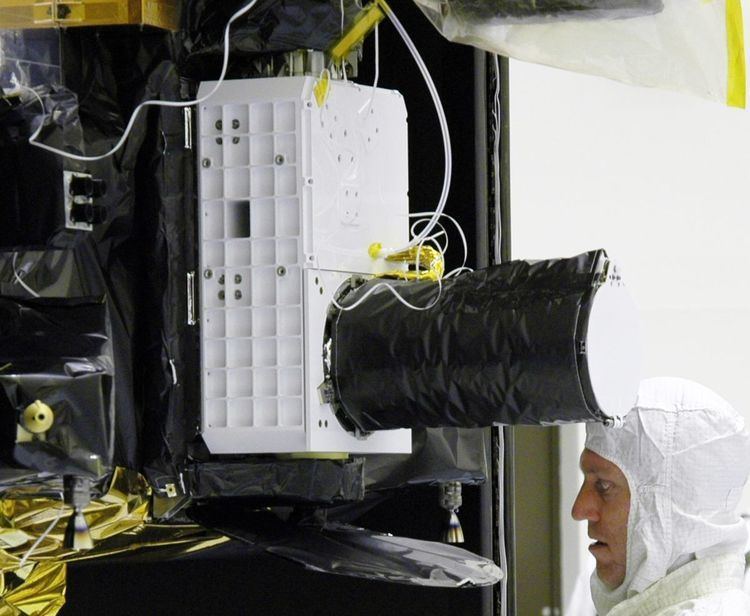 | ||
The Compact Reconnaissance Imaging Spectrometer for Mars (CRISM) is a visible-infrared spectrometer aboard the Mars Reconnaissance Orbiter searching for mineralogic indications of past and present water on Mars. The CRISM instrument team comprises scientists from over ten universities and led by principal investigator Scott Murchie. CRISM was designed, built, and tested by the Johns Hopkins University Applied Physics Laboratory.
Contents
Objectives
CRISM is being used to identify locations on Mars that may have hosted water, a chemical considered important in the search for past or present extraterrestrial life. In order to do this, CRISM is mapping the presence of minerals and chemicals that may indicate past interaction with water - low-temperature or hydrothermal. These materials include iron and oxides, which can be chemically altered by water, and phyllosilicates and carbonates, which form in the presence of water. All of these materials have characteristic patterns in their visible-infrared energy and are readily seen by CRISM. In addition, CRISM is monitoring ice and dust particulates in the Martian atmosphere to learn more about its climate and seasons.
Investigation description
CRISM measures visible and infrared electromagnetic radiation from 370 to 3920 nanometers in 6.55 nanometer increments. The instrument has two modes, a multispectral untargeted mode and a hyperspectral targeted mode. In the untargeted mode, CRISM reconnoiters Mars, recording approximately 50 of its 544 measurable wavelengths at a resolution of 100 to 200 meters per pixel. In this mode CRISM will map half of Mars within a few months after aerobraking and most of the planet after one year. The objective of this mode is to identify new scientifically interesting locations that could be further investigated. In targeted mode, the spectrometer measures energy in all 544 wavelengths. When the MRO spacecraft is at an altitude of 300 km, CRISM detects a narrow but long strip on the Martian surface about 18 kilometers across and 10,800 kilometers long. The instrument sweeps this strip across the surface as MRO orbits Mars to image the surface.
Instrument design
The data collecting part of CRISM is called the Optical Sensor Unit (OSU) and consists of two spectrographs, one that detects visible light from 400 to 830 nm and one that detects infrared light from 830 to 4050 nm. The infrared detector is cooled to –173° Celsius (–280° Fahrenheit) by a radiator plate and three cryogenic coolers. While in targeted mode, the instrument gimbals in order to continue pointing at one area even though the MRO spacecraft is moving. The extra time collecting data over a targeted area increases the signal to noise ratio as well as the spatial and spectral resolution of the image. This scanning ability also allows the instrument to perform emission phase functions, viewing the same surface through variable amounts of atmosphere, which can be used to determine atmospheric properties. The Data Processing Unit (DPU) of CRISM performs in-flight data processing including compressing the data before transmission.
